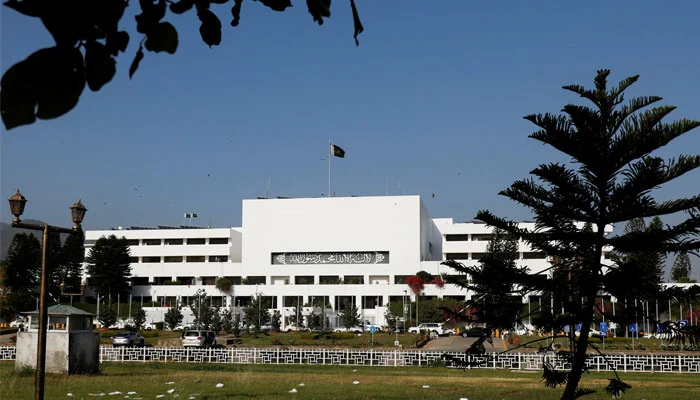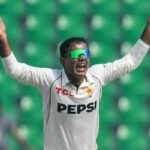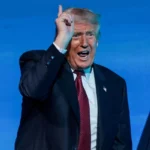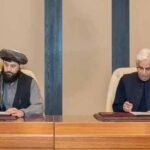A subgenre of history known as hypothetical or counterfactual history was born out of historians’ attempts to speculate on possible outcomes for important historical events.
The goal of this project is to pinpoint significant incidents and choices that, had they occurred differently, would have changed the path of history. There is a long number of pivotal moments in Pakistani history where a different judgment or action by those in authority would have changed the destiny of the nation. The question, “What if the country’s politics had taken its natural course after independence in 1947 and there had been no political engineering by institutions of state?” is one that receives scant consideration.
The removal of Prime Minister Nazimuddin’s administration by the then governor general in April 1953 and the dissolution of the Constituent Assembly in October 1954, just as it was completing the first draft of Pakistan’s constitution, were unquestionably the first attempts at political engineering. Had the Supreme Court not approved these two actions, Pakistan would have ratified the 1954 constitution and conducted general elections.
According to the outcome of the 1954 provincial elections in what was then East Pakistan, Huseyn Shaheed Suhrawardy, the head of the Awami League, would have become prime minister and the party would have become the largest in an undivided Pakistan. Suhrawardy had previously shown that he could collaborate with smaller groups by permitting A K M Fazlul Haq,of the comparatively tiny Krishak Samamik Party (KSP), to become East Bengal’s chief minister despite the Awami League of Suhrawardy having the most seats in the province assembly.
West Pakistan would have provided Suhrawardy with small party allies and a capable government. At that time, the Muslim League was the biggest party in Punjab but had lost ground in the eastern wing, leaving the Awami League with a sizable following in West Pakistan. The Muslim League had the option of being in opposition or joining the Awami League in a government of national unity. In either case, with a federal constitution and two large national parties, a parliamentary system would have come into operation.
In the early 1950s, leaders of the broad-based political parties Awami League and Muslim League came from all social strata. Because of its power in Punjab and Sindh, the Muslim League had more landowners in its upper echelons, but its public faces were urban professionals and attorneys. Although the Awami League still included landowners in its ranks, the majority of its leaders were not feudal.
The Jamaat-e-Islami and Nizam-e-Islam Party spoke for the Islamists, while the National Awami Party (NAP) represented the left in addition to these two parties. Every party had organizations at the national, regional, and local levels, and their leaders were properly chosen in regularly scheduled conventions.
Pakistan could have advanced similarly to its larger neighbor and twin, India, as it possessed the prerequisites for a parliamentary democracy.
However, the process was derailed by governor-general Ghulam Muhammad’s attempt at political engineering, which had the full support of the judiciary and army head, General Ayub Khan. However, the nation’s political landscape had not yet entirely disintegrated. The 1956 constitution was revoked and martial law was imposed in 1958, marking the start of that process. Political engineering initiatives have been made repeatedly in Pakistan since then, impeding the nation’s political development.
“What if” Field Marshal and later General Ayub Khan had not stepped in? If the planned early 1959 elections had taken place, the nation would still have seen a struggle between the Muslim League and the Awami League.
A pro-establishment Republican Party was established as a result of the 1954 intervention and the events that followed, and this party would have eventually gained some seats in parliament. Depending on the number of elected representatives, the Islamists and the left-wing NAP would also have had a say.
Khan Abdul Qayyum Khan would have been prime minister if the Muslim League had prevailed in the fictitious 1959 election, but the party also had a number of other notable candidates to run for the position. The Awami League’s obvious option for the top position was Suhrawardy. Both were seasoned politicians with administrative expertise as well as firsthand knowledge of the independence war. There would have been similarly experienced members of the opposition. Assess them against the engineering products produced after politics.
Ayub Khan defended his involvement by saying it was an attempt at a once-in-a-lifetime course adjustment. Since then, every aspirant political engineer has had the same thought process: with a little pressure here, a little engineering there, excluding X, and advancing Y, the nation will eventually achieve stability and prosperity. However, neither under Ayub Khan nor in the years that followed, the dogmatic beliefs that “all the country needs is good, honest leadership” or “all we need to do is breed better politicians” were able to end Pakistan’s issues.
Ayub Khan addressed concerns over the public’s lack of education and the inefficiency of parliamentary democracy in his autobiography “Friends Not Masters.” These issues have been brought up every few years following each new non-political intervention.
However, the nation has still a long way to go before achieving universal literacy or enacting land reform to reduce the power of landlords, even 65 years after the first attempt at political engineering. The nation’s problems still exist, and solutions have not yet been discovered.
Many engineering attempts would have resulted in a completely different political scene by now if political engineering was the solution to these problems.







